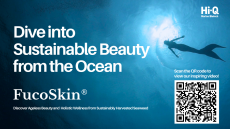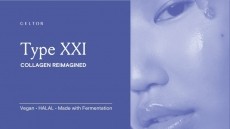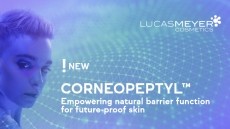Deodorant and antiperspirant NPD still relying on actives from 50+ years ago: Review
![According to the review, many 'fundamental questions' remain unanswered in the field of efficacy testing for active ingredient alternatives [Getty Images]](/var/wrbm_gb_food_pharma/storage/images/_aliases/wrbm_large/publications/cosmetics/cosmeticsdesign-europe.com/headlines/formulation-science/deodorant-antiperspirant-innovation-still-based-on-50-year-old-active-ingredients-finds-review/16248469-1-eng-GB/Deodorant-antiperspirant-innovation-still-based-on-50-year-old-active-ingredients-finds-review.jpg)
Writing in Cosmetic Science, researchers from the UK and Beijing reviewed trends in the deodorants and antiperspirants category, looking at novel active ingredient development and efficacy testing methods. Specifically, the researchers reviewed active ingredients that were alcohol-free, paraben-free and naturally derived.
“Over the recent years, consumers have shown a growing interest in purchasing personal care products with naturally derived ingredients,” the researchers wrote.
The review, therefore, tracked developments made in this “new class of deodorant active ingredients”, looking at essential oils, deodorising fabric, plant extracts and bacterial extracts.
Active ingredients from 50 years ago
“Topical deodorants and antiperspirants are common approaches to target foul-smelling body odour,” the researchers said. “However, the success of those products is relying on active ingredients that have been introduced more than 50 years ago.”
In antiperspirants, for example, they said the mechanism of action still relied on the use of aluminium salts such as aluminium chloride which were developed in 1916.
Whilst research into naturally derived alternatives like bacterial extracts, plant extracts, essential oils, and alternative synthetic compounds, had advanced, with many offering future promise in the development of new deodorants and antiperspirants, the researchers said “further investigation” was required, especially comparing these alternatives with existing formulations.
“…Much of the challenge is understanding the gelation mechanism (the ability to form a gel that physically blocks the sweat pore opening) and the dose response of antiperspirants in the sweat pore’s environment,” they said.
Efficacy testing – ‘many fundamental questions remain unanswered’
For deodorants, the researchers said efficacy was initially identified using in vitro approaches. But more recently, gas chambers were being used to conduct analysis on the reduction in malodour gas concentration after a deodorant product was introduced. This method importantly enabled quantitative analysis to take place and therefore the chemical composition of human body odour could be identified, they said.
For antiperspirant actives, however, there seemed to be a “lack of appropriate screening methodology for such ingredients”, the researchers said, which perhaps explained the limited amount of research being conducted in finding alternative antiperspirant actives.
Most methodologies used to identify antiperspirant efficacy, they said, relied on human volunteer studies, which often proved time consuming and costly. And whilst there had been several attempts to create “quick screening” platforms to test new antiperspirant actives, the researchers said the biological components and complex structure of human sweat glands were still missing from these methods.
“To our knowledge, there have been no reported in vivo studies on the gel plug formation of antiperspirant actives. Nor have [there] been reported studies on the dose-response kinetics of gel plug formation and eventual removal as affected by formulation property and sweat flow conditions.
“The efficacy and hence the formulation design of deodorants and antiperspirants products is mostly via empirical hot room studies. Many fundamental questions remain unanswered,” they said.
For example, understanding the concentration of aluminium salts delivered to sweat pores and what the minimal concentration required was in sweat pores to form gel plug; or how the eventual removal of gel plug was effected by sweat flow and other formulation factors; and whether other gelation technologies could be exploited to deliver antiperspirant benefits and how.
The researchers said the significant challenge remained, therefore, around understanding how the gel-plugs of antiperspirant actives were formed in sweat pores, along with how to deliver “long-lasting antiperspirant and deodorant benefits without adverse health and environmental effects”.
Source: Cosmetic Science
Published online ahead of print, doi: 10.1111/ics.12852
Title: “Deodorants and antiperspirants: New trends in their active agents and testing methods”
Authors: P. Teerasumran, E. Velliou, S. Bai and Q. Cai
![The formula contains a blended lotus extract that also offers active properties [Getty Images]](/var/wrbm_gb_food_pharma/storage/images/_aliases/wrbm_medium/publications/cosmetics/cosmeticsdesign-europe.com/article/2023/02/20/coty-files-patent-on-antiperspirant-with-long-lasting-fragrance-using-lotus-blend-from-provital/16183967-1-eng-GB/Coty-files-patent-on-antiperspirant-with-long-lasting-fragrance-using-lotus-blend-from-Provital.jpg)
![Unilever's R&D teams are looking to take existing 72-hour sweat and odour protection to new heights [Getty Images]](/var/wrbm_gb_food_pharma/storage/images/_aliases/wrbm_medium/publications/cosmetics/cosmeticsdesign-europe.com/headlines/brand-innovation/unilever-eyes-deodorant-breakthrough-for-2030-after-patented-72-hour-antiperspirant-rollout/15841217-1-eng-GB/Unilever-eyes-deodorant-breakthrough-for-2030-after-patented-72-hour-antiperspirant-rollout.jpg)
![Mio Skincare's Pit Proof deodorant is 100% natural, made using a blend of plant oils, extracts and minerals [Image: Mio Skincare]](/var/wrbm_gb_food_pharma/storage/images/_aliases/wrbm_medium/publications/cosmetics/cosmeticsdesign-europe.com/article/2022/08/25/mio-skincare-launches-pit-proof-deodorant-to-plug-natural-beauty-consumer-demands/15711171-1-eng-GB/Mio-Skincare-launches-Pit-Proof-deodorant-to-plug-natural-beauty-consumer-demands.jpg)
![Unilever wants to develop scalp, oral and underarm care products using 'skin-identical' lipid precursor technology that stimulates natural ceramide production in skin [Getty Images]](/var/wrbm_gb_food_pharma/storage/images/_aliases/wrbm_medium/publications/cosmetics/cosmeticsdesign-europe.com/article/2022/07/20/unilever-to-develop-skin-microbiome-products-in-scalp-oral-and-underarm-care-with-ceramide-technology/15613431-1-eng-GB/Unilever-to-develop-skin-microbiome-products-in-scalp-oral-and-underarm-care-with-ceramide-technology.jpg)
























